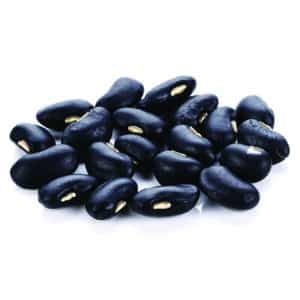
Until recently, legumes have not received very much attention as a healing food. But what makes legumes so healthy? What can legumes provide that green smoothies and trendy ways of eating cannot?
The secret is in legumes’ high soluble-fiber content. Legumes, the mature, dried seeds of bean, lentil, and pea plants, contain the most soluble fiber of any commonly consumed food.1 This fiber should not be confused with insoluble fiber, or cellulose, the kind found in most fruits, vegetables—and green smoothies.
In one study, thirty prairie dogs were placed on a cholesterol-supplemented gallstone-forming diet. Ten animals received supplemental soluble fiber, ten received supplemental cellulose, and the remaining ten received no supplementation. After six weeks, all gallbladders were inspected for gallstones, and blood and bile were collected for analysis. Cholesterol gallstones were present in eight out of ten of the control group, six out of ten in the cellulose group, and three out of ten in the soluble-fiber group.
Concentrations of cholesterol were significantly lower in the soluble-fiber group compared to controls, leading to a significant reduction in cholesterol saturation overall. The researchers concluded that soluble fiber inhibits cholesterol stone formation by reducing cholesterol saturation in the bile.2
Another study, this time in mice, came to a similar conclusion. The mice were provided a high-cholesterol, gallstone-forming diet for ten weeks. This resulted in the supersaturation of gallbladder bile, which induced the formation of cholesterol gallstones. The mice were then fed legume powder at five, ten, and fifteen percent of the high-cholesterol diet. This resulted in a 43 percent, 46 percent, and 58 percent reduction in gallstone formation respectively. In addition, the soluble fiber markedly reduced biliary cholesterol, resulting in an overall reduction in serum cholesterol, while preventing the accumulation of cholesterol gallstones.3
The upshot? It appears soluble fiber sequesters bile in the gut, preventing it from being recirculated, leading to a desaturation of cholesterol in the bile, and a reduction in serum cholesterol overall.
But what if a person doesn’t like legumes or wants to avoid them for other reasons? There are many ways to obtain adequate soluble fiber in one’s diet. The top five soluble fiber foods, after legumes, are oats (oatmeal), Brussels sprouts, flax seeds, avocados, and sweet potatoes.4 And if these don’t work, a high-quality psyllium fiber supplement should do the trick. —TP
References:
- https://www.todaysdietitian.com/newarchives/120913p16.shtml
- Wayne H Schwesinger, MD, William E Kurtin, PhD, Carey P Page, MD, Ronald M Stewart, MD, Robbie Johnson. “Soluble Dietary Fiber Protects Against Cholesterol Gallstone Formation” https://www.sciencedirect.com/science/article/abs/pii/S0002961099000471
- Chikkanna K Raghavendra and Krihnapura Srinivasan. “Anti-cholelithogenic Effect of Dietary Tender Cluster Beans (Cyamopsis tetragonoloba) on the Formation of Cholesterol Gallstones in Mice” https://cdnsciencepub.com/doi/abs/10.1139/apnm-2013-0176
- https://www.healthline.com/nutrition/foods-high-in-soluble-fiber#1.-Black-beans





